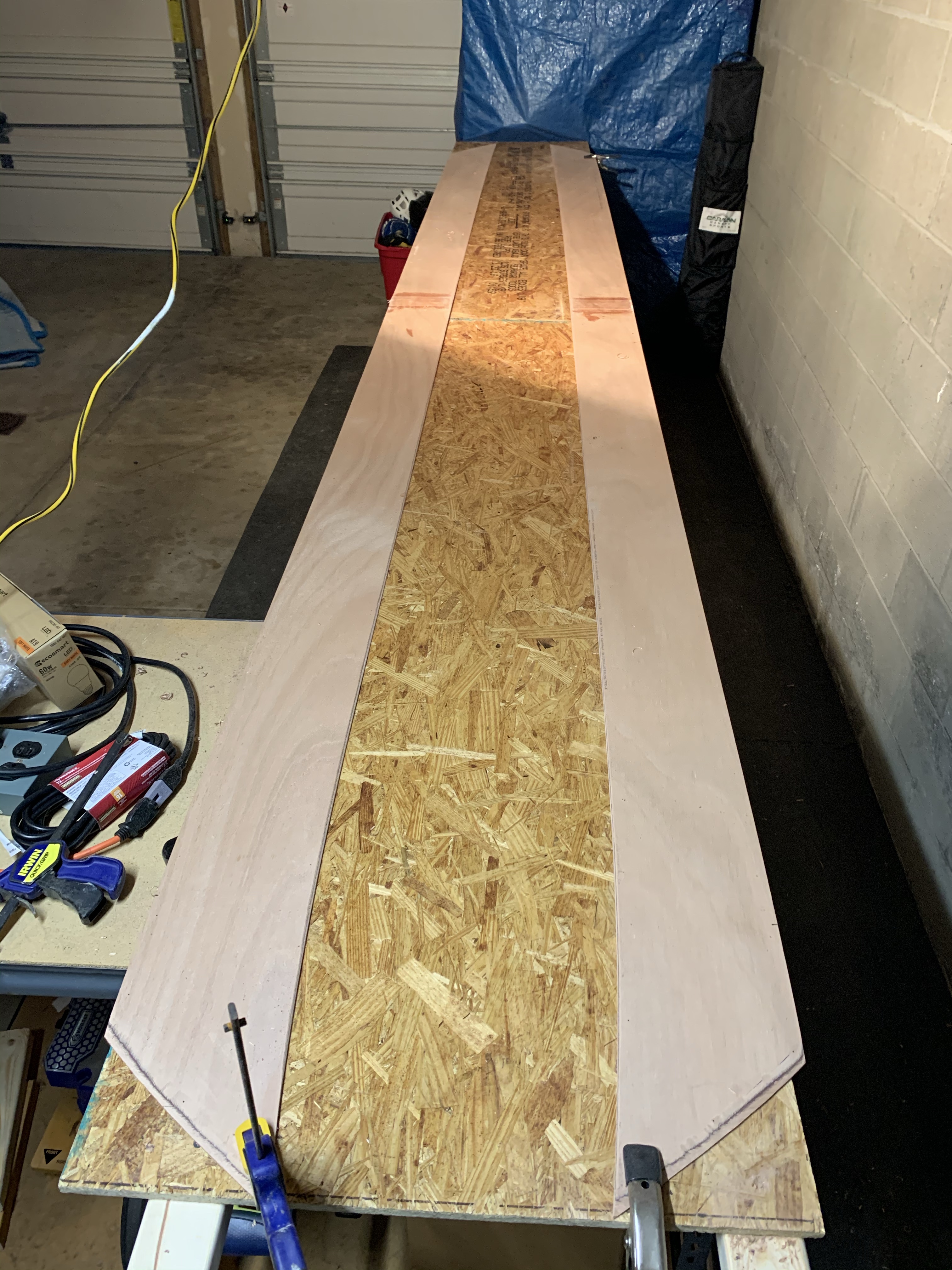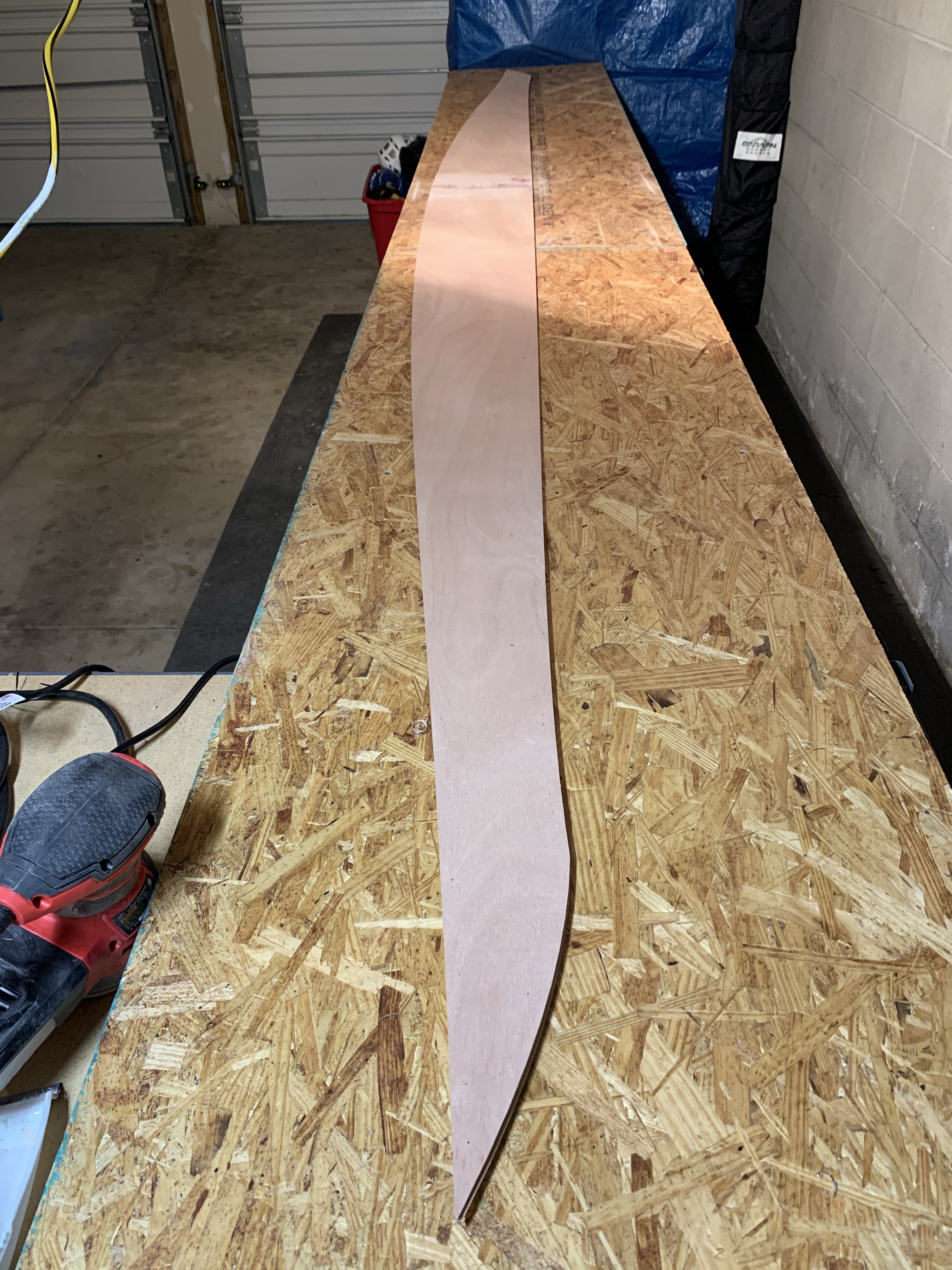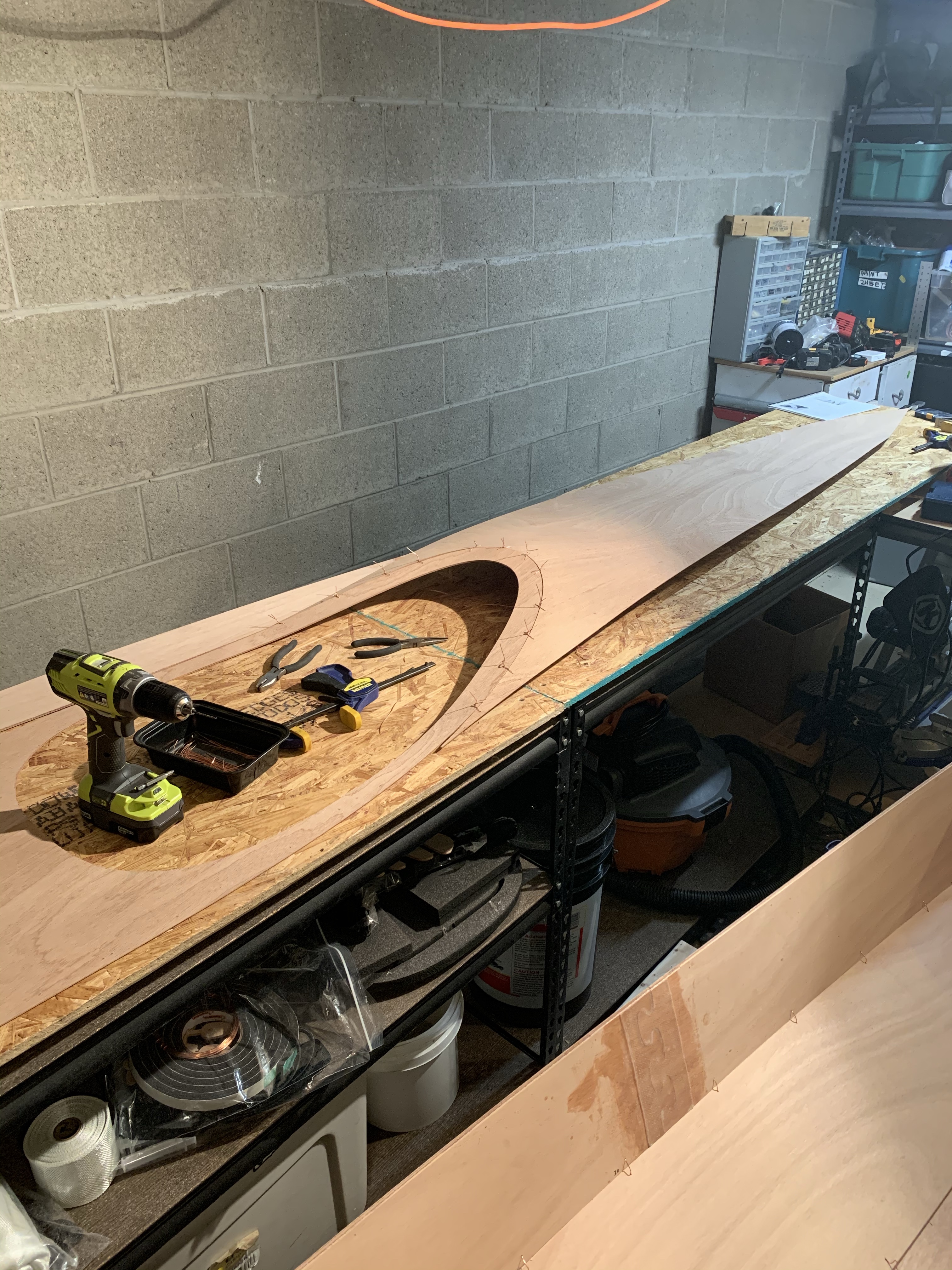I completed all of the beveling, which took about two hours. I did my best to get the bevel angles as prescribed, but honestly how can you tell if an angle is 10 or 30 or 45 degrees on a 4mm thick panel? So I went with a small, medium and large approach, which roughly was 1, 2 or 3 passes with the plan and some evening up with a sanding block. Here’s a picture of my set up, the end panels are clamped down insides up ready for beveling.

At this point I broke out the 5″ random orbit sander and dressed the tape joints and took down the braided edge and feathered them a bit, though not called for in manual I just thought it would be easier now. Also, I did not do a great job on the puzzle joints and the needed some smoothing on the outside as well. This said all will be covered with cloth and glass, but I wanted to address this now as well.
With those steps complete, I couldn’t help myself from stitching up the bottom panel. I broke out the metal sheers and cut the copper wire coils into 4 inch pieces.

Then matched up the bottom panels with the inside surfaces facing each other.

Then I slide the stack over to the edge of the bench so the predrilled holes were clear of the work surface allowing the copper wires to be passed through both panels. The precision cut panels can be seen in the picture above, but what was also impressive is that the holes for the stitching are perfectly aligned in the stacked panels. The stitched panels are pictured below.
See the note below, in my excitement I stitched through a set of holes meant for attaching the bulkhead. I simply removed the wire in that hole, see the note below.

Next step is to stitch in the bulkheads and temporary formers, followed by the side panels.





















